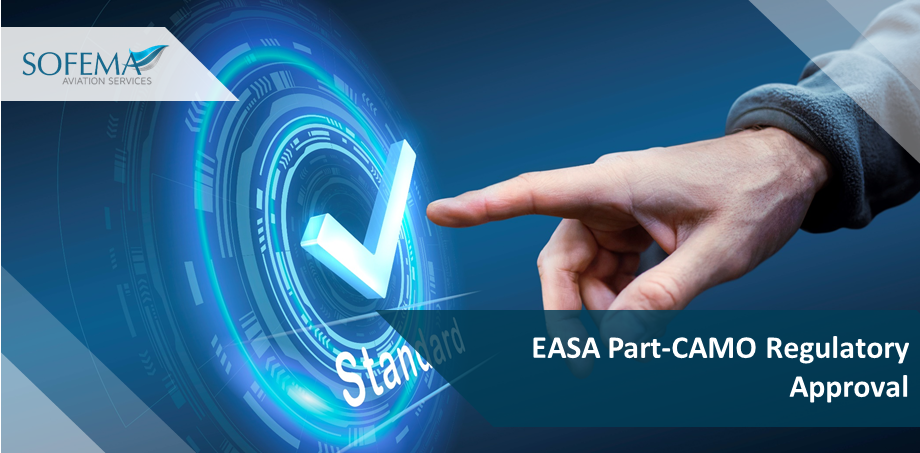Sofema Aviation Services associated with EASA Part-CAMO
Introduction
The following Terminology and Definitions have been adopted by EASA for use specifically with regulations concerning the operation of an EASA Part-CAMO Organisation.
Definitions
Assessment – in the context of management system performance monitoring, continuous improvement, and oversight, refers to a planned and documented activity performed by competent personnel to evaluate and analyze the achieved level of performance and maturity in relation to the organization’s policy and objectives.
Note: An assessment focuses on desirable outcomes and the overall performance, looking at the organization as a whole. The main objective of the assessment is to identify the strengths and weaknesses to drive continual improvement.
Competency – is a combination of individual skills, practical and theoretical knowledge, attitudes, training, and experience.
Note: Historically the concept of competency is focused on Knowledge – Skills & Attitude, here EASA expands this to identify that knowledge relates to both practical & theoretical aspects and adds to my mix as additional elements – training & experience.
What is the Difference Between Human Factors & Human Performance?
Human Factors is anything that affects human performance, which means principles that apply to aeronautical activities, and that seek a safe interface between the human and other system components by proper consideration of human performance.
Human Performance refers to human capabilities and limitations that have an impact on the safety and efficiency of aeronautical activities.
Inspection – In the context of compliance monitoring and oversight, refers to an independent documented conformity evaluation by observation and judgment accompanied, as appropriate, by measurement, testing or gauging, in order to verify compliance with applicable requirements.
Note: Inspection may be part of an audit (e.g. product audit), but may also be conducted outside the normal audit plan; for example, to verify the closure of a particular finding.
Organisational Factor – is a condition that affects the effectiveness of safety risk controls, related to the culture, policies, processes, resources, and workplace of an organisation.
Risk Assessment is an evaluation based on engineering and operational judgement and/or analysis methods in order to establish whether the achieved or perceived risk is acceptable or tolerable.
Safety Culture – is an enduring set of values, norms, attitudes, and practices within an organisation concerned with minimising the exposure of the workforce and the general public to dangerous or hazardous conditions.
In a positive safety culture, a shared concern for, commitment to, and accountability for safety is promoted.
Safety risk – refers to the predicted probability and severity of the consequences or outcomes of a hazard.
Safety training – refers to dedicated training to support safety management policies and processes, including human factors training.
Note: The main purpose of the safety training programme is to ensure that personnel at all levels of the organisation maintain their competency to fulfil their roles safely.
Safety training should, in particular, consider the safety knowledge derived from hazard identification and risk management processes, and support the fostering of a positive safety culture.
Follow this link to our Library to find & download related documents for Free.
What`s more :
a) Introducing a Cutting Edge, Effective & Affordable CAMO Software
b) For access to a world leading CAMO Diploma Program with 25 separate courses please see the following links
Next Steps
Sofema Aviation Services and Sofema Online – Provide Classroom, Webinar & Online Regulatory & Vocational Training.
For further details please email team@sassofia.com
Tags:
aviation safety, EASA, Human Factors, Risk Assessment, Part CAMO, Human Performance





